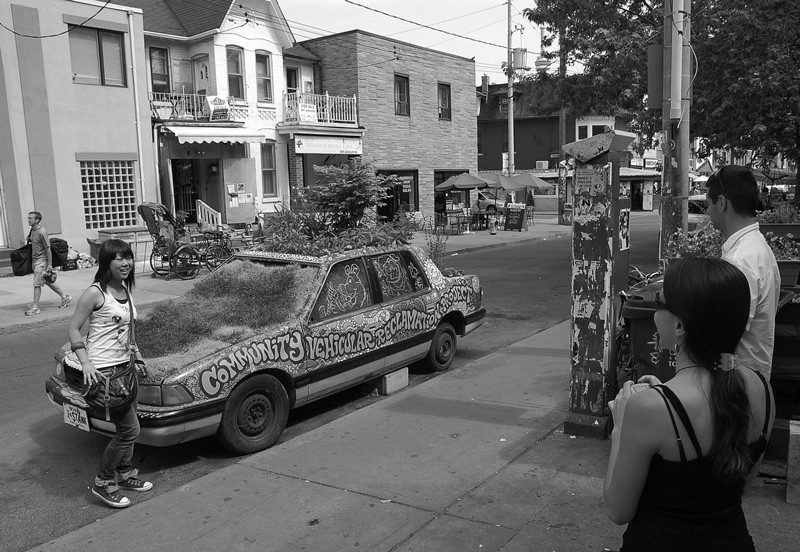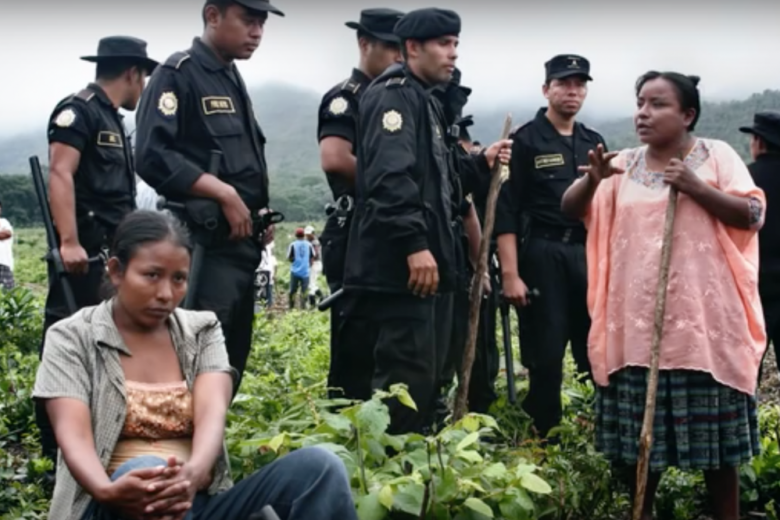
Shayna and Dominique have just set out on a cross-Canada trip to seek out intentional communities and learn from their experiences. They’ll be blogging about what they find right here on www.briarpatchmagazine.com.
As technology and globalization rearrange communities on a massive scale, the very definition of “community” is becoming increasingly ambiguous. Physical communities, where neighbours share more than just property lines, are being replaced by online communities. Friendships formed on Facebook are replacing social networking in the flesh, making communities increasingly broad and abstract.
However, across Canada, pockets of people are working to maintain, rebuild, or create physical communities. Many of these communities are seeking alternatives to the environmental destruction and social decay perpetuated by mainstream society; some seek to provide a community environment of love and support to people of diverse mental and physical abilities; others just want a place to share ideas and space with like-minded people. No matter what their specific goals, all such groups are what we might call intentional communities, as they have all come together with community as a central uniting intention.
Our goal in the coming weeks is to travel across Canada to seek out these communities, learn what we can from them, and share their stories with you.
Who are we?
We are two thinkers, dreamers, and poets, continuously questioning our place in this world. We both spend a lot of time watching and listening. We love learning, and have a deep passion for sharing what we learn with others through our respective arts“”Shayna through the written word, and Dominique through photography.
Our curiosity about intentional communities stems partially from our own diverse experiences of community. I, Shayna, grew up in the smallish city of Sarnia, Ontario, on a quiet avenue that provided fertile ground for a budding optimism about the world. I played hide and seek and jumped rope with other girls in the neighbourhood, read avidly, spent countless hours on the beach with my mom and my younger sister, and was substantially spoiled on a regular basis by Grandma and Grandpa. I walked to school year-round. My food, as far as I knew, came from the grocery store. My community consisted of my small nuclear family, my grandparents, and a few close friends.
Before moving to Canada, Dominique spent the first ten years of his life in Jamaica, playing in the dirt in his underwear. He and his playmates spent their days catching fish, chasing ducks, and climbing trees, oblivious to anything beyond their small neighbourhood. They (almost) always made it home just in time for dinner“”usually dumplings, kalaloo, rice, and boiled bananas“”which was shared with anyone who came for it. His community consisted of his family“”his mom, her seven brothers and sisters, and his grandmother“”his neighbours, as well as a throng of children who shared his fondness for dirt.
Currently, we both live in Kensington Market, a remarkably diverse but tight-knit neighbourhood in downtown Toronto. People flock to the Market for its variety of fresh, affordable produce, its unique shops, and its captivating and quirky atmosphere. Though it has become a popular tourist attraction in Canada’s biggest city, Kensington Market has managed to maintain the feel of a small-town community. My favourite part about Kensington is the diversity of stories, smells, and sounds. The rich mixture of cultures and personalities creates a fascinating landscape for listeners, watchers, and curious thinkers like us.
What’s the plan?
Bartering our skills and labour for accommodation, food, and transportation, we will make our way from coast to coast, community by community, starting in Halifax, Nova Scotia. On the way, we will record our experience“”in photographs, audio, and print“”in order to share with others the stories of the people we meet along the way. In addition to learning what we can from the eccentric communities and people along the way, we’ll also be thinking a great deal about the journey itself, and how the social connections we make along the way influence what we see and the route we take. We’ll be blogging about our experiences at www.briarpatchmagazine.com“”and we hope you’ll follow along!
Defining community

In preparing for this journey, we draw inspiration from social scientist John McKnight, a leading thinker on issues of community. McKnight says that community is an idea; it exists only in the mind. Thus, there are as many different definitions of community as there are people on this earth. One of our goals through this journey is to locate some of those definitions and hold them up to the light. How do people across Canada define community, and why is it important to them? What larger (global or national) forces encourage or inhibit the formation of communities?
We’re also interested in learning how the people and communities we meet are addressing global issues such as climate change and sustainability. And, more ideologically, where does the idea of community fit within our current world order? Can community be a place of effective resistance to the forces of capitalism and imperialism in which we all, unwittingly, play a part?
Our focus is intentional communities, which we are defining, for now, as any group of people coming together with community as their central uniting purpose. We’ll be looking for groups of people who not only make a conscious effort to develop and maintain a personal connection with their neighbours, but for whom this interpersonal connection is a source of strength and renewal for everyone involved. This may include housing co-operatives, eco-villages, First Nations communities, religious communities, nudist or naturalist communities, and wherever else our social connections and chance encounters take us. Our definition is deliberately broad, and will surely be modified and strengthened based on our interactions with people along the road.
Generation alienation
We are members of a generation that is overwhelmingly connected through online networks, but severely lacking in face-to-face personal interactions. We express our emotions in abbreviations like OMFG and LOL, or by clicking the appropriate smiley or frowny face from a list. But even beyond the impact of the Internet, our society in general has become incredibly segmented and compartmentalized.
Canadians, especially young Canadians, are beginning to feel disillusioned by this system, and are seeking alternatives. Michael Valpy, a writer for the Globe and Mail, describes our generation as one that, “because of political illiteracy or political alienation, or both, increasingly finds the traditional institutions of Canadian democracy irrelevant to their concerns and their daily lives” (“A Generation Redefines Civic Society” June 20, 2003). A quote from a passionate young woman in the same article epitomizes what we have been hearing from many people our age who feel alienated by the institutionalization of society:
“If you don’t have a community, you can’t survive. So as a matter of survival, you have to care for other people. I think that’s where my passion comes from. Because if I don’t change things, my life is going to look too much like my mother’s life… . I want to feel inspired all the time, I want to feel creative all the time. I want to feel open and honest. I want to feel caring and cared for. I want to feel challenged. I want to feel I have the strength to take risks… . I guess I don’t ever want to feel numb. I think a lot of people are walking around dead.”
Much of what this young woman seeks“”to feel creative and significant“”can be found in a healthy community, where each member’s respective strengths are recognized and used.
Focusing on the decay of community, however, only feeds it; instead, we want to highlight alternatives, to illuminate the rich variety of alternate possibilities. Our goal with this project is to connect with people who are making efforts to be more than individuals in a system.
We hope you will travel and learn with us. In true Internet-age fashion, we will be sharing our experiences through a blog, which you can access through www.briarpatchmagazine.com. We’d also love to hear from anyone who lives in, or has contacts in, a community we should visit along the way.
Read Shayna and Dominique’s first post from the road, or browse all postings.
To start your subscription or order this issue, call (306) 525-2949 or, toll-free, 1-866-431-5777, email us, or subscribe online.




_780_520_90_s_c1_c_c.jpg)

